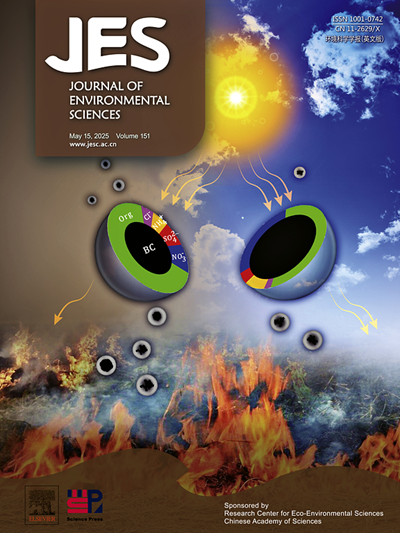Investigation on the effect of ship emissions on the air quality: A case study in Hainan Island, China
IF 5.9
2区 环境科学与生态学
Q1 ENVIRONMENTAL SCIENCES
引用次数: 0
Abstract
This paper presents an air quality simulation model that incorporates shipping activities and weather conditions, with a case study of Hainan Island to examine the impact of ship emissions on air quality. The findings reveal that the density of automatic identification system (AIS) signals is particularly high in the southern coastal regions. The results showed that the annual ship emissions recorded the highest density of 896.7 tons/0.01°, 49.8 tons/0.01°, 1139.7 tons/0.01°, and 122,000 tons/0.01° for sulfur oxides (SOx), particulate matter (PM), nitrogen oxides (NOx), and carbon dioxide (CO2), respectively. Furthermore, the partial distributions of these emissions were not significantly affected by the seasons. Ships within twelve nautical miles of Hainan coastlines emit approximately 2817.7 tons of SOx, 14,686.4 tons of NOx, 630.4 tons of PM2.5, and 416.9 tons of hydrocarbons (HC) annually. These emissions are primarily concentrated in the sea areas surrounding the ports of Haikou, Yangpu, Basuo, and Sanya. Ships manufactured between 2000 and 2010 have contributed significantly to air pollution, with SOx and HC emissions accounting for approximately 51 % and 56 % of total emissions, respectively. However, for ships manufactured after 2016, these proportions have dropped to approximately 10 %. In terms of air pollutants from ship emissions in Hainan Island, the spatial distribution of their contributions is significantly uneven. The impact of PM2.5 differs significantly depending on the season, with the concentrations being substantially higher during Spring. However, the proportions of O3 and other pollutants do not vary significantly, except during Spring.

求助全文
约1分钟内获得全文
求助全文
来源期刊

Journal of Environmental Sciences-china
环境科学-环境科学
CiteScore
13.70
自引率
0.00%
发文量
6354
审稿时长
2.6 months
期刊介绍:
The Journal of Environmental Sciences is an international journal started in 1989. The journal is devoted to publish original, peer-reviewed research papers on main aspects of environmental sciences, such as environmental chemistry, environmental biology, ecology, geosciences and environmental physics. Appropriate subjects include basic and applied research on atmospheric, terrestrial and aquatic environments, pollution control and abatement technology, conservation of natural resources, environmental health and toxicology. Announcements of international environmental science meetings and other recent information are also included.
 求助内容:
求助内容: 应助结果提醒方式:
应助结果提醒方式:


